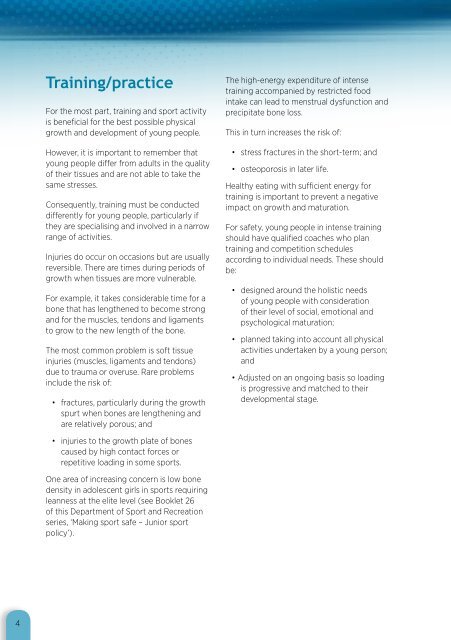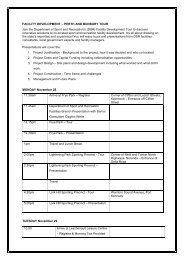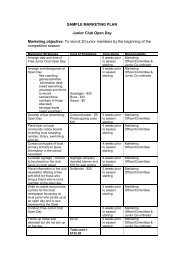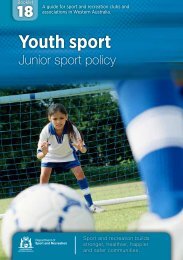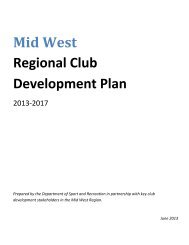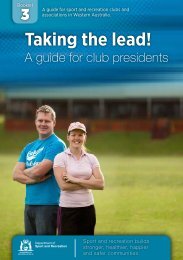Physical growth and maturation - ClubsOnline
Physical growth and maturation - ClubsOnline
Physical growth and maturation - ClubsOnline
Create successful ePaper yourself
Turn your PDF publications into a flip-book with our unique Google optimized e-Paper software.
Training/practice<br />
For the most part, training <strong>and</strong> sport activity<br />
is beneficial for the best possible physical<br />
<strong>growth</strong> <strong>and</strong> development of young people.<br />
However, it is important to remember that<br />
young people differ from adults in the quality<br />
of their tissues <strong>and</strong> are not able to take the<br />
same stresses.<br />
Consequently, training must be conducted<br />
differently for young people, particularly if<br />
they are specialising <strong>and</strong> involved in a narrow<br />
range of activities.<br />
Injuries do occur on occasions but are usually<br />
reversible. There are times during periods of<br />
<strong>growth</strong> when tissues are more vulnerable.<br />
For example, it takes considerable time for a<br />
bone that has lengthened to become strong<br />
<strong>and</strong> for the muscles, tendons <strong>and</strong> ligaments<br />
to grow to the new length of the bone.<br />
The most common problem is soft tissue<br />
injuries (muscles, ligaments <strong>and</strong> tendons)<br />
due to trauma or overuse. Rare problems<br />
include the risk of:<br />
• fractures, particularly during the <strong>growth</strong><br />
spurt when bones are lengthening <strong>and</strong><br />
are relatively porous; <strong>and</strong><br />
• injuries to the <strong>growth</strong> plate of bones<br />
caused by high contact forces or<br />
repetitive loading in some sports.<br />
One area of increasing concern is low bone<br />
density in adolescent girls in sports requiring<br />
leanness at the elite level (see Booklet 26<br />
of this Department of Sport <strong>and</strong> Recreation<br />
series, ‘Making sport safe – Junior sport<br />
policy’).<br />
The high-energy expenditure of intense<br />
training accompanied by restricted food<br />
intake can lead to menstrual dysfunction <strong>and</strong><br />
precipitate bone loss.<br />
This in turn increases the risk of:<br />
• stress fractures in the short-term; <strong>and</strong><br />
• osteoporosis in later life.<br />
Healthy eating with sufficient energy for<br />
training is important to prevent a negative<br />
impact on <strong>growth</strong> <strong>and</strong> <strong>maturation</strong>.<br />
For safety, young people in intense training<br />
should have qualified coaches who plan<br />
training <strong>and</strong> competition schedules<br />
according to individual needs. These should<br />
be:<br />
• designed around the holistic needs<br />
of young people with consideration<br />
of their level of social, emotional <strong>and</strong><br />
psychological <strong>maturation</strong>;<br />
• planned taking into account all physical<br />
activities undertaken by a young person;<br />
<strong>and</strong><br />
• Adjusted on an ongoing basis so loading<br />
is progressive <strong>and</strong> matched to their<br />
developmental stage.<br />
4


